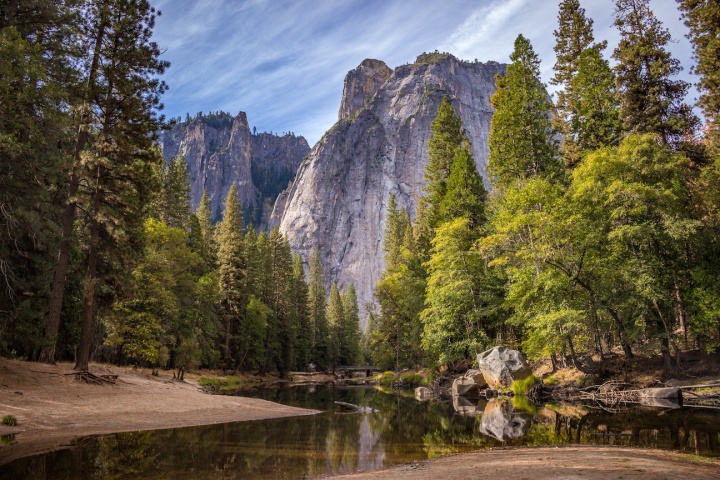
- Target:
- Tanzania Government, East African Community (EAC)
- Region:
- GLOBAL
- Website:
- www.anaw.org
According to local press reports and a statement from the Communications, Officer of Tanzania National Parks, the Tanzanian Government is planning to build a commercial road cutting directly through the Serengeti wilderness, which completely bisects the path of the world famous annual wildebeest and zebra migration comprised of nearly 2 million animals.
The road was first discussed and put for financing to the World Bank about twenty years ago but based on the recommendation of an EIA carried out by the WB, it was abolished for environmental reasons. The presently suggested routing of the commercial road is for 53 kilometers running through the Serengeti National Park, dissecting the northern Wilderness area of the Park. Giving the increasing traffic, the road might become the highest risk to the wildebeest migration and the integrity of the Serengeti as the number one natural wonder of the world upon which Tanzania’s tourism depends. Initially the new road will not have a great impact on the Wildebeest Migration.
But the Wildebeest Migration will have a great impact on the traffic. Increasing traffic will result in an increasing toll on human life and equipment through vehicle - wildlife collisions. These - unacceptable - losses will force TanRoads to consider fencing. Such fencing would truly mean the end of the Great Migration as the wildebeest, zebras and eland could not reach the Mara River (their only water source in the dry season) anymore and would die at the fence-line. Botswana lost its wildebeest and zebra migration with such fences. And in Canada, the elk migration in Banff National Park was also compromised because of a dissecting road The loss of the Serengeti Migration – the last of its kind in the world - would not only mean the end of Tanzania’s priceless natural and national heritage, the end of the Serengeti as iconic World Heritage Site but also a significant decline in tourism in the Serengeti and in neighbouring Masai Mara Reserve in Kenya.
The only way to avoid to severely reduce the conservation and economic value of the Serengeti National Park, its status as a World Heritage Site and endangering and damaging Tanzania’s reputation as world leader in conservation is to look for another alignment of the road outside the National Park. With the bad situation in Mikumi National Park as an example the Government of Tanzania rejected other proposal of major public road building in Parks as recently in the Tarangire National Park.
A road through the Serengeti would provide even more human fatalities and wildlife impact than the road through Mikumi • As suggested by a world bank study and Tanzania National Park, the planned road should be routed around the Serengeti National Park to the south. (The existing Ngorongoro – Serengeti road will remain as a tourist access road only) • The southern version makes more economic sense as it will be serving over two million people • It will not impact on the value of the world famous Serengeti National Park and World Heritage Site but immensely contribute to the economic development of Karatu, Meatu, Maswa, Bariadi and Magu – Districts • The road from Arusha to Loliondo should be rehabilitated to link Loliondo efficiently Any road in the Serengeti National Park should be for for tourist access and park management – not for transit and has to be under the control of TANAPA, including gates, no night driving, avoiding critical areas for conservation, low speed.
We the undersigned wish to bring your attention the subject of a Highway Construction project through the Serengeti National Park. Economically, the highway construction may be important to Tanzania. However, the opportunity cost to wildlife and to the regional tourism sector will be disastrous.
Expert opinion by the World Bank and Frankfurt Zoological Society caution that the project would have huge negative implications to the entire Serengeti ecosystem. High speed traffic will be a death trap to all wild animals, poachers will gain easy access posing grave danger to threatened species, heavy construction traffic, pollution, work gangs and noise will greatly affect wildlife in their natural habitat during and after construction, invasive plants will spread easily into the Serengeti ecosystem, as several invasive plant species including Chromolaena, Mexican Marigold, Opuntia and others invade new areas along road verges.
In line with the EAC Protocol on Environment and Natural Resources Management which recognizes that development activities may have negative impacts on the environment, often leading to degradation and depletion of natural resources and that a clean and healthy environment is a prerequisite for sustainable development and in view of expert opinion, we request you to reconsider the available alternatives to this project.
It will be unfathomable to see thousands of Wildebeest lined up on the side of this Highway, all disoriented, scared and unable to cross the large tarmac into the Masai Mara National Reserve! Tourism within the Eastern Africa Region will be seriously affected as tourists will be diverted towards other destinations. Local and regional investment and thousands of jobs in the hospitality, tourism and corresponding industries will be lost.
Finally, we hereby appeal to you to pursue this matter with a view to guarding against environmentally destructive development projects in the East African Region.
You can further help this campaign by sponsoring it
The Save Serengeti National Park petition to Tanzania Government, East African Community (EAC) was written by Frankline Mukwanja and is in the category Environment at GoPetition.